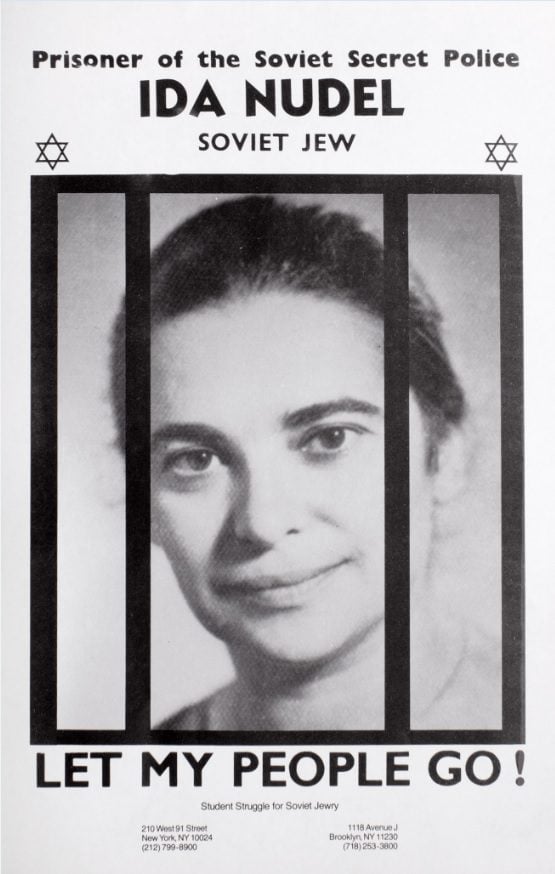Posters of “refuseniks” from the Student Struggle for Soviet Jewry (SSSJ) -Ida Nudel (1978-1982) New York, USA
“Refuseniks” was the unofficial name given to Jews who were refused permission by the Soviet authorities to emigrate from the USSR (primarily to Israel). Years when the posters were circulated: Ida Nudel (1978-1982)
Must Know
The Student Struggle for Soviet Jewry, also known by the acronym SSSJ, was a US movement that fought for the rights of Soviet Jews during the time of the Iron Curtain. Founded in 1964, Their slogan ‘Let my People Go’ refers to Jews living in the Soviet Union who are denied immigration and is derived from Exodus 9:1.
More Info
The Student Struggle for Soviet Jewry was founded by Jacob Birnbaum, a Jewish activist with extensive experience assisting survivors of Nazism and totalitarianism after World War II. A UK citizen, he settled in New York in 1963 where he met many grassroots activists who made him aware of the struggles of Soviet Jews.
From 1964 to 1971 the SSSJ was the only American organisation that campaigned full time for Soviet Jewry. The movement had 4 major pressure points: the Kremlin, the US government, public opinion and the American Jewish community. The organisation was an active organiser of protests at important locations as well as active congressional lobbying. Additionally, the SSSJ were co-founders of the official American Conference on Soviet Jewry in April 1964 and was attended by Martin Luther King Jr.
What makes this movement special is its teacher-student core. During his time near the Yeshiva University in New York, Birnbaum recruited a number of young Rabbis, academics and students that made up the founding members of the SSSJ. Together, they compiled a vast list of refuseniks and prisoners of Zion (who were Soviet Jews attacked based off their punitive Zionist activities). The movement and its activities contributed to the eventual opening of the gates of the Kremlin and a mass emigration of Soviet Jews.
The Soviet secret police was first created by Vladimir Lenin after the October Revolution (1917-1923) in 1917. Secret policing operations were mostly part of larger intelligence and surveillance organisations within the Soviet Union such as the KGB.

